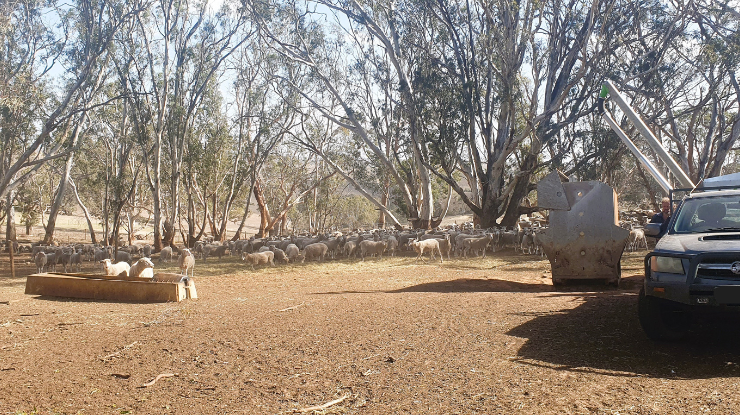 Stock containment pen showing the incorporation of shade into the design, with fenced off trees.
Stock containment pen showing the incorporation of shade into the design, with fenced off trees.
Containment feeding beyond drought: adapting to rain
While containment feeding is frequently associated with dry conditions, it was wet weather causing concerns for the McLean family.
Bobbie and Angus McLean, with their three teenage daughters, farm 1220 ha at Harrow and Coojar in the western district of Victoria.
They use containment yards for their prime lamb enterprises when feed runs out in summer and autumn. This saves pasture, protects their perennials and maintains groundcover on hills.
“Harrow is extremely hilly and has a light sedimentary soil type. It’s difficult to keep groundcover on the tops and sides of hills,” said Bobbie.
In 2016, they first built three containment yards because of dry conditions and lack of paddock water. They then added another three. Fast forward to 2024 and they started building another six pens, this time thinking carefully about their design.
Experience taught them when it does rain, the soil type - being a sandy loam – doesn’t form a hard pad, even under the high stock densities experienced within pens. This means pens can become muddy when it's wet and dusty when dry.
“When it rained, the soil became greasy and slippery, causing occupational health and safety issues when trying to fill the self-feeders.
“Stock would dig out around the feeder mats, making it difficult to get the auger into the right position,” she said.
What was a one-person job that could be easily done by Bobbie or her daughters, became a two-person, carefully negotiated task.
In their new design, they have made pen sizes larger to give more area to move machinery around, especially because the new pens contain trees. They increased the lane size to 20m wide, allowing equipment to be moved more easily while stock remain contained when gates are opened. This has made feeding simpler and doesn’t require highly-skilled labour.
They keep smaller mobs of 200 in pens to reduce how often they need to fill feeders and try to avoid filling in wet weather. They have also tried to reduce erosion by experimenting with frequently moving and placing feeders on old eaten-down straw bales.
They tried augering from the laneway into feeders placed on the fence line but found that problematic with some stock getting stuck between the fence and the feeder.
Bobbie found locating the stock containment close to the yards and shearing shed as one of their best decisions.
“Stock can easily be moved into containment pens and it allows monitoring of livestock. If there is an issue in the pens, we can see what’s happening from the yards,” said Bobbie.
Jessie Wettenhall, Research and Extension Officer from Southern Farming Systems, visited the McLeans after they attended one of the MLA-funded ‘Uncertain Times’ workshops to talk through their containment ideas. Jessie gave them a booklet from the SA Drought Hub on containment feeding. This helped their confidence in working out floor space and stock numbers.
Jessie said, “Producers don’t necessarily consider how to manage containment feeding once they get wet, which they will as ewes are often contained over the break of season.”
While careful site selection is necessary to help improve drainage, there are other useful management strategies available. These include:
- designing pens to ensure run-off drains from top to bottom and doesn’t flow into adjacent pens
- drainage works
- using footing materials such as wood chips to reduce mud around feeding or watering stations
- using troughs to minimize feed wastage
- letting sheep out for a few days to dry out the pens.
“Having all-weather access and a plan for wet weather management in containment pens is critical for functionality,” Jesse said.
Bobbie expects this will not be their last build. She and Angus are keen to build containment facilities at their Coojar property, having found them a valuable tool for managing pastures and meeting water supply and livestock feeding requirements.



